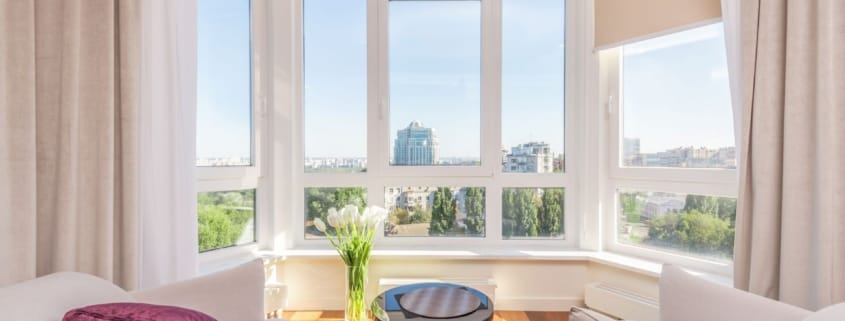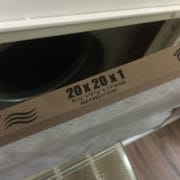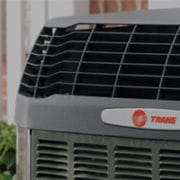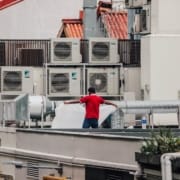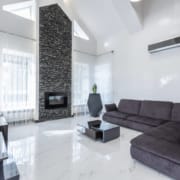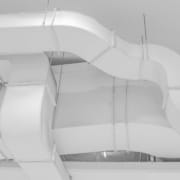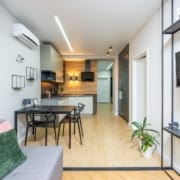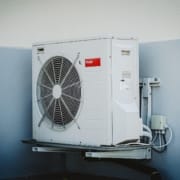Top 7 Ways You Can Keep Your Home Cool This Summer
Summer is the hottest season of the year. Even though the sun goes down at night, the high-angle summer temperatures remain relatively constant, with no signs of change. Heat is dangerous — and sometimes deadly. Published research shows that overheating can lead to heatstroke, which is a life-threatening condition.
It’s important to keep your house cool this summer to prevent overheating, heat exhaustion, heat cramp, and heat rash. Therefore, you should mitigate the effects of excessive heat in your home by looking at ways to keep your home cool this summer.
7 Ways to Keep Your Home Cool This Summer
1. Air Sealing
Air sealing represents a superior solution for keeping your house cool and your HVAC systems efficient. When you air seal, you prevent the loss of conditioned cool air and heat entry. This, in return, increases the coolness of your interior space and promotes the efficiency of the cooling systems. The HVAC doesn’t have to work as hard to retain the conditioned cool air and prevent hot or warm air.
2. Insulation
Insulation works through a similar mechanism as air sealing. Usually, insulating your windows and doors prevents the entry of warm air and keeps the cool air inside. Insulation works as a barrier, preventing the escape of conditioned cool air and hindering hot air from outside.
3. Check for Air Leaks
It’s advisable to check for air leaks and seal them. Common areas to look out for include door frames, windows, sockets, baseboards, pipes, and electrical outlets. You can use caulking or weather stripping to seal small cracks or tiny openings between doors and windows. You can use foal sealant to cover cracks and holes in ceilings, floors, walls, and windows. Use door sweeps to prevent outside air from accessing your indoor space.
4. Ventilation
Ventilation, commonly known as airflow, allows the exchange of stale indoor air with fresh outside air, thus creating a healthier and more welcoming indoor space. Proper ventilation helps eliminate poor, polluted air containing moisture, cook fumes, and volatile organic compounds (VOC), which can all contribute to discomfort. You can achieve proper ventilation through cross-ventilation. This process involves opening windows on opposite sides to allow air to flow in one window and flow outside to the other.
5. Effective Use of Air Conditioning
Air conditioning can reduce your energy expenditure because air conditioners improve indoor air quality, reducing energy and electricity expenses. Reducing energy usage from air conditioning minimizes carbon emissions, thus improving your environmental carbon footprint. Regular cleaning of A/C units and regular maintenance improves your indoor air quality. Clean air filters have fewer allergens, less dust, smoke, and other contaminants likely to be distributed by the air conditioning system.
Here are a few energy-saving practices when using air conditioning:
- Use natural cooling methods: Before turning on your air conditioner, open your windows during hot hours to allow cool, fresh air. In addition, use fans when necessary and take advantage of natural temperature changes.
- Maintain proper insulation: Effective air sealing prevents heat loss and heat gain, improving the performance and functioning of your air conditioning system.
- Zone cooling: If possible, utilize zone cooling by using portable air conditioners or adjusting your vents and pipes. Use zone coolers in specific areas of your home instead of cooling the entire space.
6. Outdoor Shading and Landscaping
Outdoor shading prevents direct sunlight from reaching your windows, doors, and walls, ensuring optimal indoor temperature. Shading acts as a passive cooling method because it diffuses direct sunlight, eliminates the need to use mechanical cooling techniques, and saves energy.
Here are tips for strategically shading your outdoor space:
- Tree placement: Strategically identify the sun’s path during the day and plant trees on the eastern and western sides of your walls and windows to prevent direct sunlight from hitting your home.
- Shade structures: Install pergolas and awnings on your outdoor space and south-facing windows to prevent the high-angle summer sun from hitting your windows and walls.
- Deciduous trees: If you live in an area with distinct climatic patterns, you can opt for deciduous trees which shed their leaves during winter to allow direct sunlight radiation to reach your home.
7. Energy-Efficient Lighting
Lighting is essential for every home, but inefficient lighting can lead to higher energy bills. Traditional incandescent bulbs and other inefficient lighting alternatives contribute to carbon emissions with devastating environmental footprints.
Some tips for energy-efficient lighting:
- Replace traditional lighting: Replace all incandescent bulbs with LED bulbs for more efficient lighting.
- Identify lighting requirements: Assess the lighting requirements for each room and evaluate the appropriate bulb wattages and color temperatures to minimize energy consumption.
- Dimmer switches and timers: Install timers to automatically switch off the lights when they’re not in use. Use dimmer switches to adjust the light according to your needs.
Briggs HVAC – Your Expert in Indoor Cooling Solutions
Briggs HVAC in Northern Virginia is your expert in residential and commercial indoor cooling. The company sells, installs, repairs, and maintains air conditioners, helping homes and offices meet indoor cooling needs. Briggs HVAC specializes in different HVAC brands, including Trane, Daikin, Carrier, Aprilaire, and Goodman.
Contact Briggs HVAC for superior indoor cooling solutions to keep your home cool this summer.

